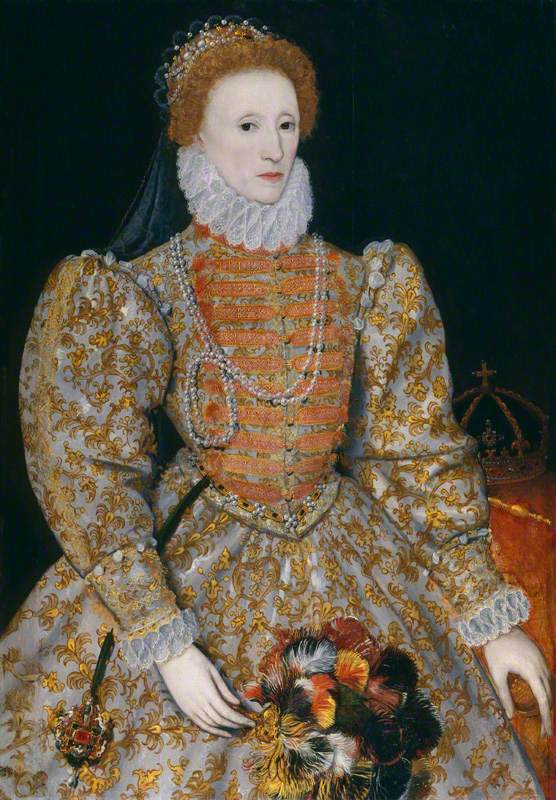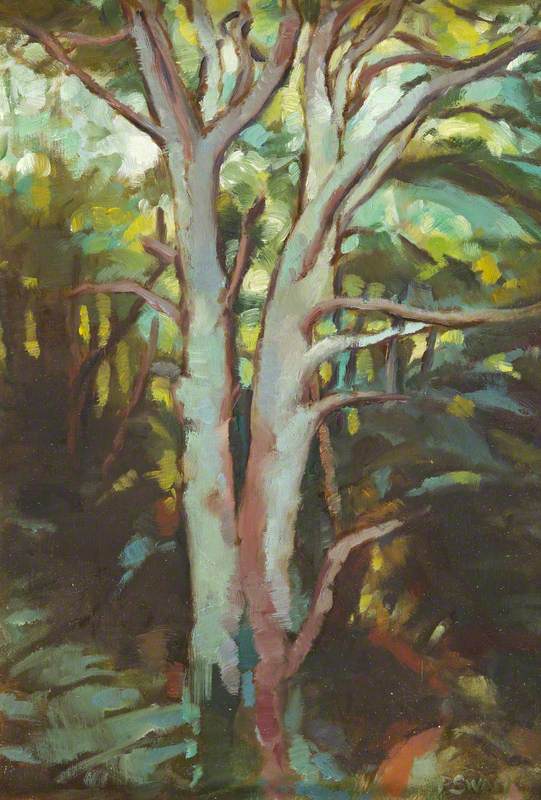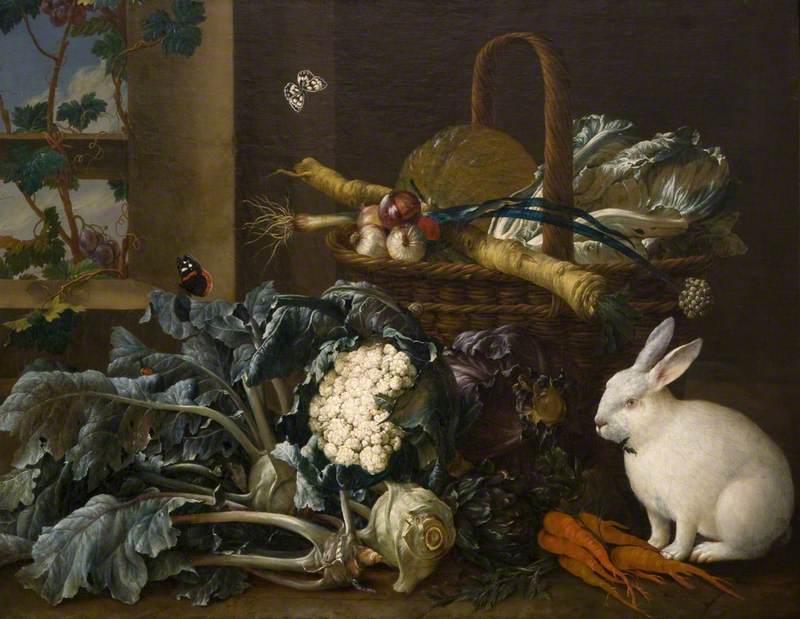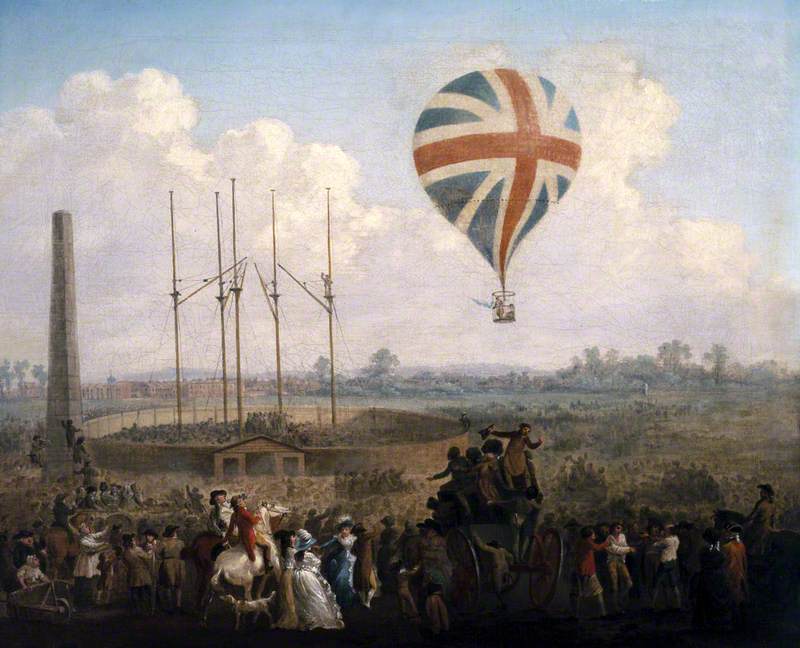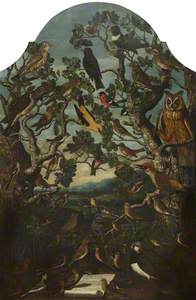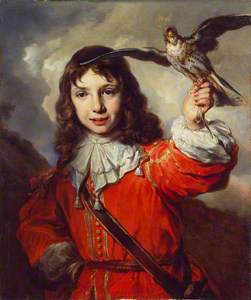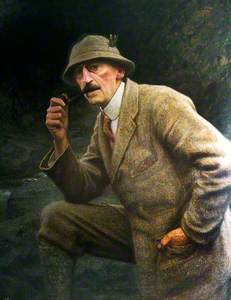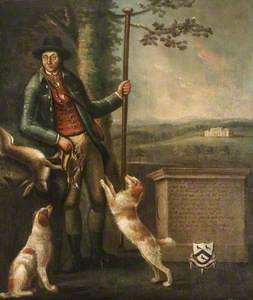Like millions of other viewers across the United Kingdom, I was struck by the remarkable diversity of UK birdlife while watching Wild Isles – a five-part documentary series co-produced by the BBC and The Open University. In the first episode alone Sir David Attenborough whisked viewers from Orkney to Dover to marvel at puffins, gannets, barnacle geese, gulls and golden eagles – to name just a few.
'Birds of Britain': A Concert of Song Birds in Two Trees, Watched by an Owl
17th C
Flemish School 
Although Wild Isles does it especially well, the idea of representing the variety of birds that live in the UK is not new. The work of an anonymous Flemish artist depicts around forty different species, while another unknown artist included over 25 in their Study of Birds for example.
These paintings span genre painting and natural history and are very well represented in UK museums, as Anita Sethi has explored in paintings of individual birds.
However, my preferred way to birdwatch in art is, perhaps surprisingly, to look at paintings of people. Nestled within portraiture, these birds are silent and still but equally astonishing to behold.
Art historians and curators often focus on the symbolic value humans map onto birds, whether in portraiture or any other genre. I am suggesting that this is not the end of the story.
I offer up a modest but important proposition: let art lovers become bird lovers and let bird watchers become art watchers. Let us move into spaces of 'nature' and 'culture' with a similar intention to attend to the close relationships humans have with animal lives, and to bring the lives of birds into our understanding of ourselves.
A painting attributed to the Dutch painter Abraham Hondius makes my case for the connection between art lovers and birdwatchers more concrete.
Man Watching Waterfowl from behind a Tree
c.1680–1690
Abraham Hondius (c.1625–1691) (attributed to) 
The title claims that this man is watching birds yet his gaze is directed toward us. He appears slightly distracted and cannot see the birds behind the tree. The artist seems to place his viewer in the role of birdwatcher. Our privileged position allows us to admire the carefully painted crane and selection of waterfowl in the foreground. What are those other birds? Terns? Gulls? Could a birdwatcher shed light on the matter?
How could we begin to do this work? We could start by changing the way we look at the animals in portrait paintings. An example is Hans Holbein's depiction of a starling in a striking portrait at The National Gallery.
A Lady with a Squirrel and a Starling (Anne Lovell?)
about 1526-8
Hans Holbein the younger (c.1497–1543) 
This small songbird perches against a vibrant blue background. Unlike the red squirrel that sits comfortably in the sitter's lap, the starling rests just behind her shoulder, as though the sound of its song could be a secret whispered in her ear.
Another Art UK story by Susan Foister sheds light on the possible reason for the starling's presence. She notes that the name of the bird may be a play on words on East Harling, where the family of the likely sitter lived. While this may be true, the starling's careful rendering suggests that it was more than just a static motif or generic idea.
It is as though this particular starling was represented by an actual bird, perhaps even one that was known or observed by the artist. Holbein's mastery of oil paint mimics the shine of the animal's plumage and the gleam in its eye. The artist captures the subtle patterning and the minute detail of each spine of its dark feathers. Holbein pays close attention to its morphology and visual characteristics which suggest a new kind of interest in understanding birds at an early moment in the history of ornithology.
What might a birdwatcher or amateur ornithologist say looking at Holbein's starling? Or the clutch of pigeons in Van Honthorst's A Young Shepherdess?
A Young Shepherdess Holding Pigeons in a Nest
1600–1625
Gerrit van Honthorst (c.1590–1592–1656) 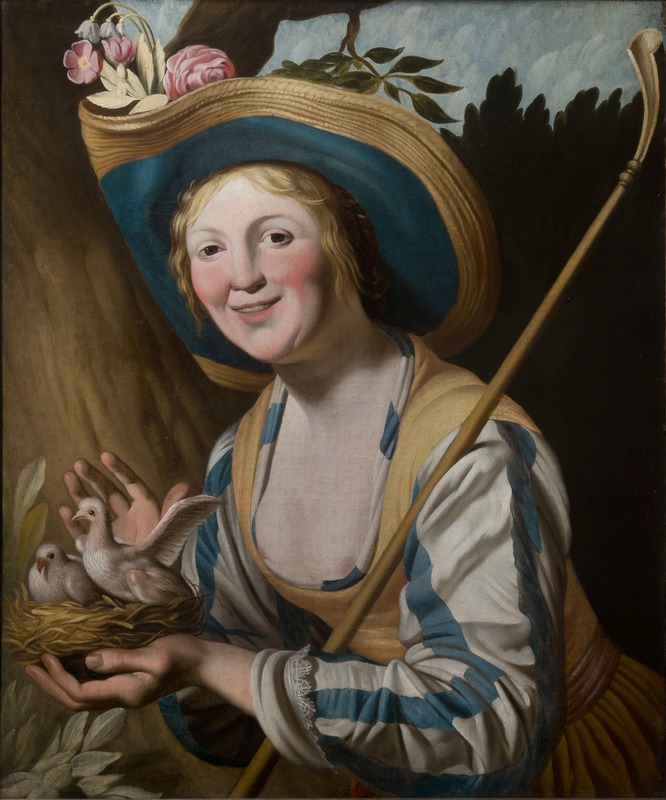
Or the robin in A Boy Aged Two by Gheeraerts the younger?
Or any of the portraits that include birds – living and dead – below. What of the paintings of people wearing feathered accessories, like those used to make the feather fan held by Elizabeth I, or the trim feather on the cap of the author Henry Sutcliffe?
The immense popularity of feather accessories by the late nineteenth century greatly impacted bird biodiversity, leading the way to the foundation of the Royal Society for the Protection of Birds. This connection is something I explored in a short film Hunting For Feathers which traced a connection between portraiture and bird biodiversity through ostrich feather accessories. Feather accessories were so important that the sitters included them in their painted portraits, offering another way that humans relate to the lives of birds, and even emulate them through fashion.
I imagine that if gallery-goers and birdwatchers were to swap roles for a time, and to share and discuss any of the artworks I listed above or below, we might cultivate a richer connection to the diversity of birds living across the 'Wild Isles' of the United Kingdom, and the ways that humans relate to them.
This is, ultimately, at the core of the consciousness-raising and conservation work that the RSPB and so many others have undertaken in response to rapidly declining bird populations. To begin to see our close relationships with these creatures across nature and culture is one way to shift our viewpoint. We are not separate from the animal world. We ourselves are animals.
Our precious birds encompass real living puffins, golden eagles and pigeons, as well as the falcons, robins and starlings seen in portraiture. Let's not exclude the birds depicted by artists from the category of 'our precious birds'. They have their own story to tell, after all.
Dr Carla Benzan, Lecturer in Art History, The Open University
Wild Isles is a co-production between the BBC and The Open University










